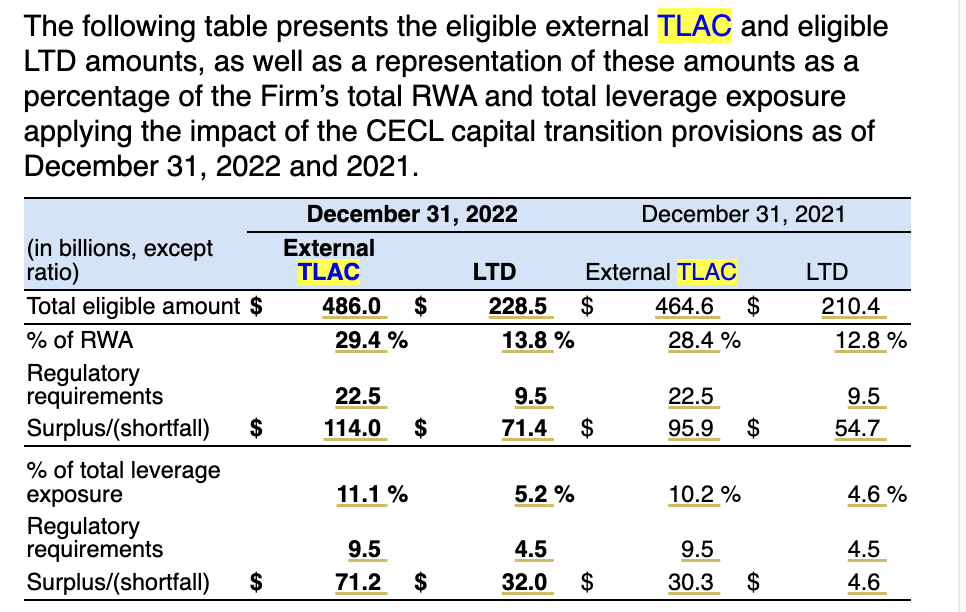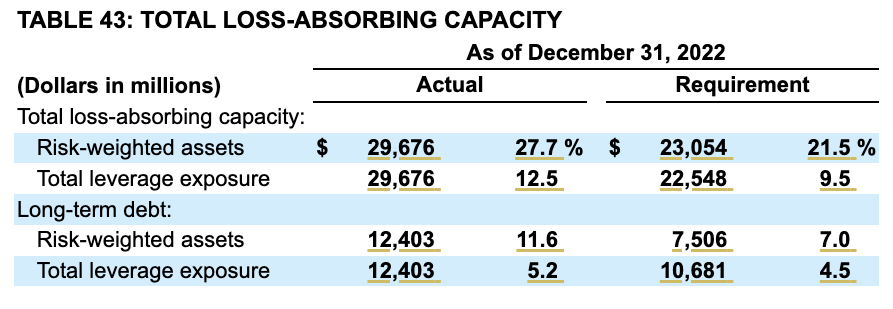As we all prepare for Q3 earnings releases and quarterly reports to arrive within days, Calcbench wanted to fire off one more post about a performance metric important to the banking sector.
Total loss-absorbing capacity, or TLAC.
TLAC was born after the financial crisis of 2008, as a means to keep large banks solvent enough to avoid needing government bailouts. Simply put, banks must hold a certain amount of safe financial instruments on their balance sheets so that if financial conditions go south, those instruments can keep the bank stable enough to go through an orderly liquidation process (rather than the messy liquidations we saw in 2008).
The securities that can be held as TLAC include common equity, subordinated debt, and some senior debt, but what they are isn’t as important as how much the bank holds. Under rules set down by the Federal Reserve, globally systemically important banks (G-SIBs) must keep either 18 percent of their total risk-weighted assets or 7.5 percent of total leverage exposure as TLAC.
Anyway, that’s not the most important point in our post today. The most important point is that Calcbench does have this data, if you’re a financial analyst who follows banks and you’re looking for it.
Unfortunately TLAC disclosures are not tagged in XBRL, which means Calcbench users cannot automatically pull it from banks’ financial statements. But banks do include TLAC information in their Management Discussion & Analysis disclosures — so you can search through the disclosures of one or more banks using our Interactive Disclosure tool, typing “TLAC” into the text search field.
For example, we established a search group of all filers with an SIC code in the 6000s, which is the category that includes depository institutions. Then we searched “TLAC” in the text search box, and found 47 large banks that disclosed TLAC information to various extents.
For example, JPMorgan Chase (JPM) disclosed this nifty table listing TLAC volumes:

Another example comes from State Street Corp. (SST) and its most recent 10-K filing.

As you can see, TLAC can be reported as a percentage of assets, dollar amounts, or both. When banks have surplus TLAC, that means they are (in theory) more than well-capitalized for any sudden liquidity stress. Banks under their TLAC goals, on the other hand, can face penalties from the Fed such as a freeze on asset growth.
That’s all for today. Let’s see what the banks have to say when they start filing quarterly reports in another week or so!